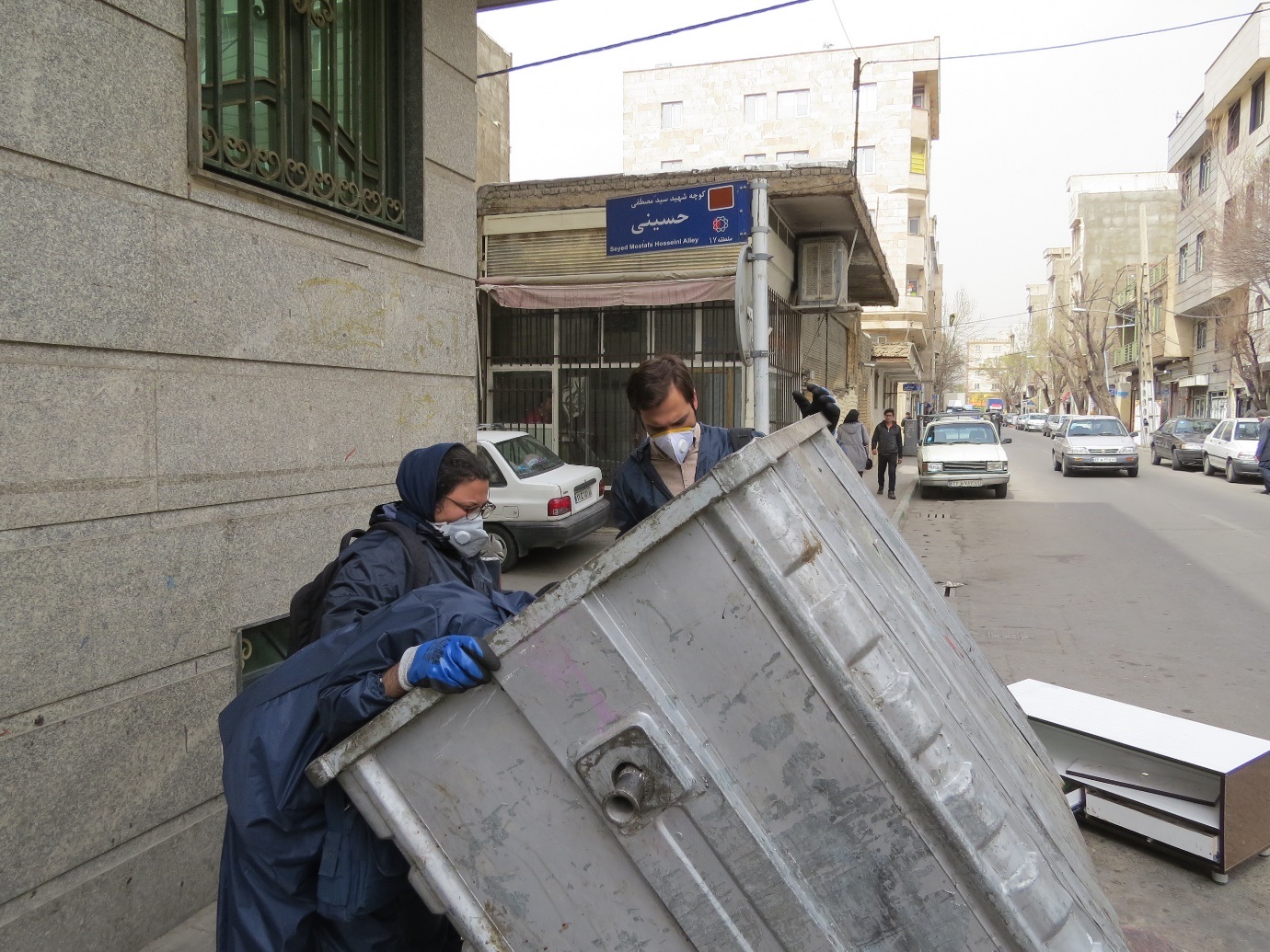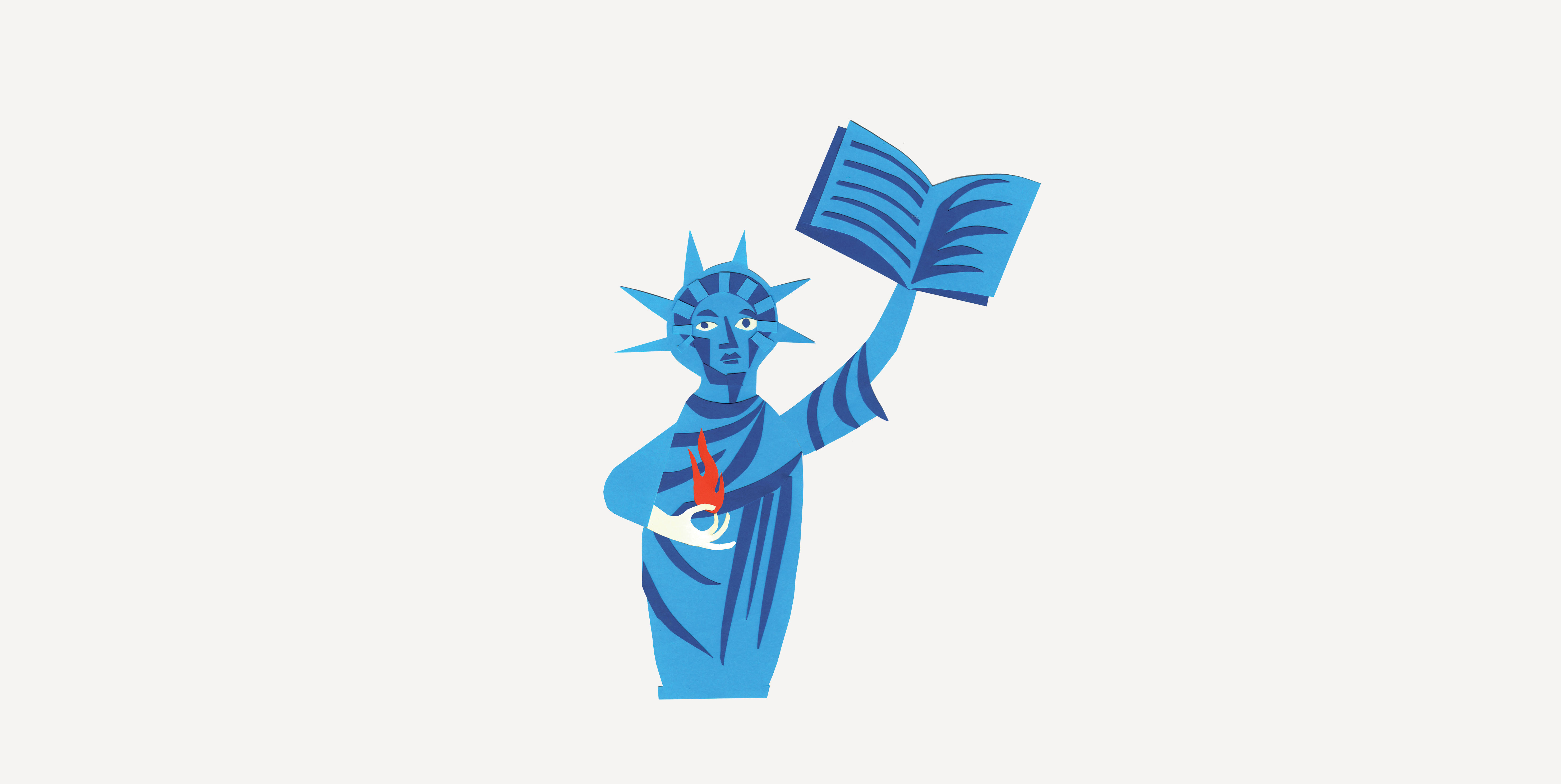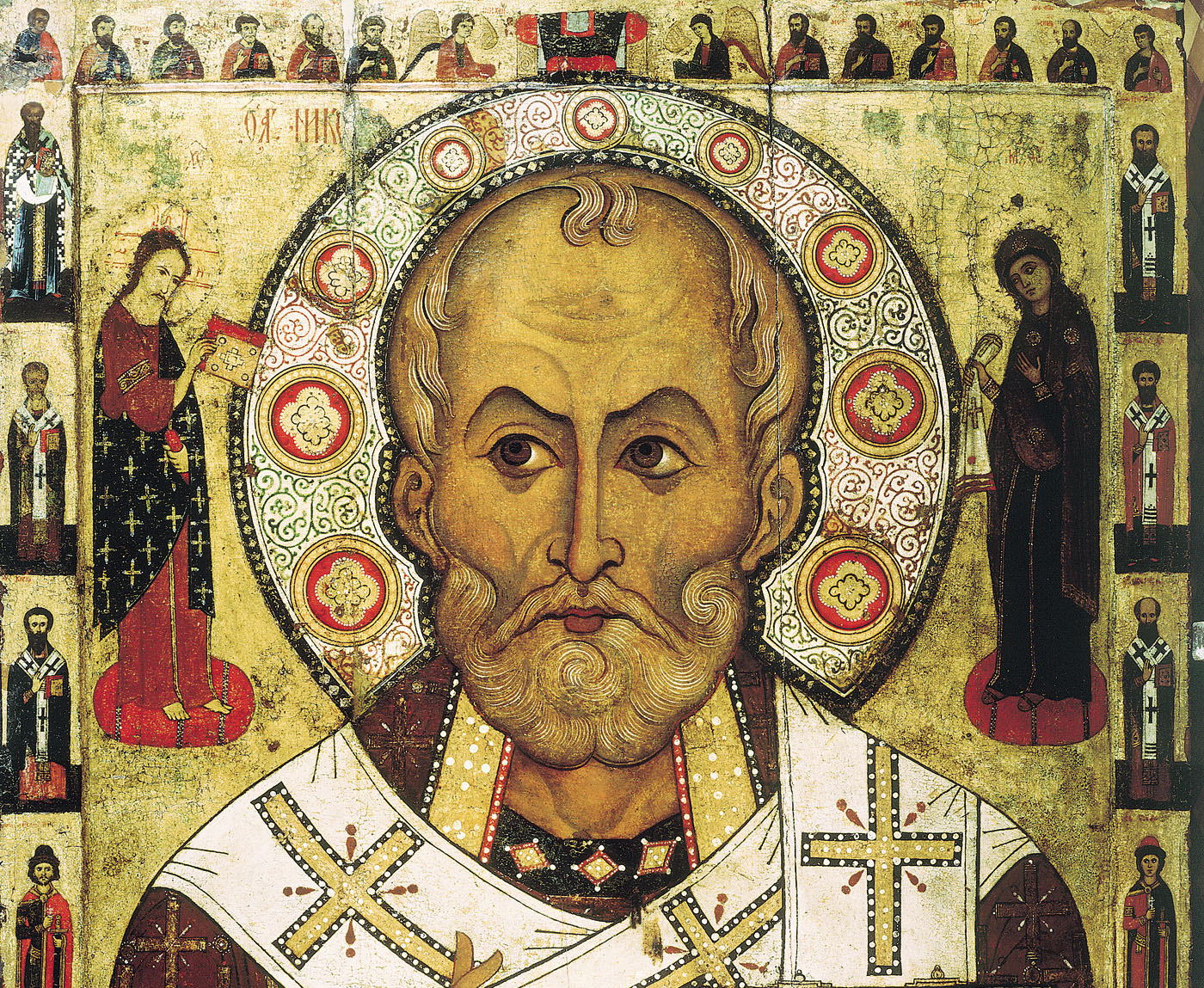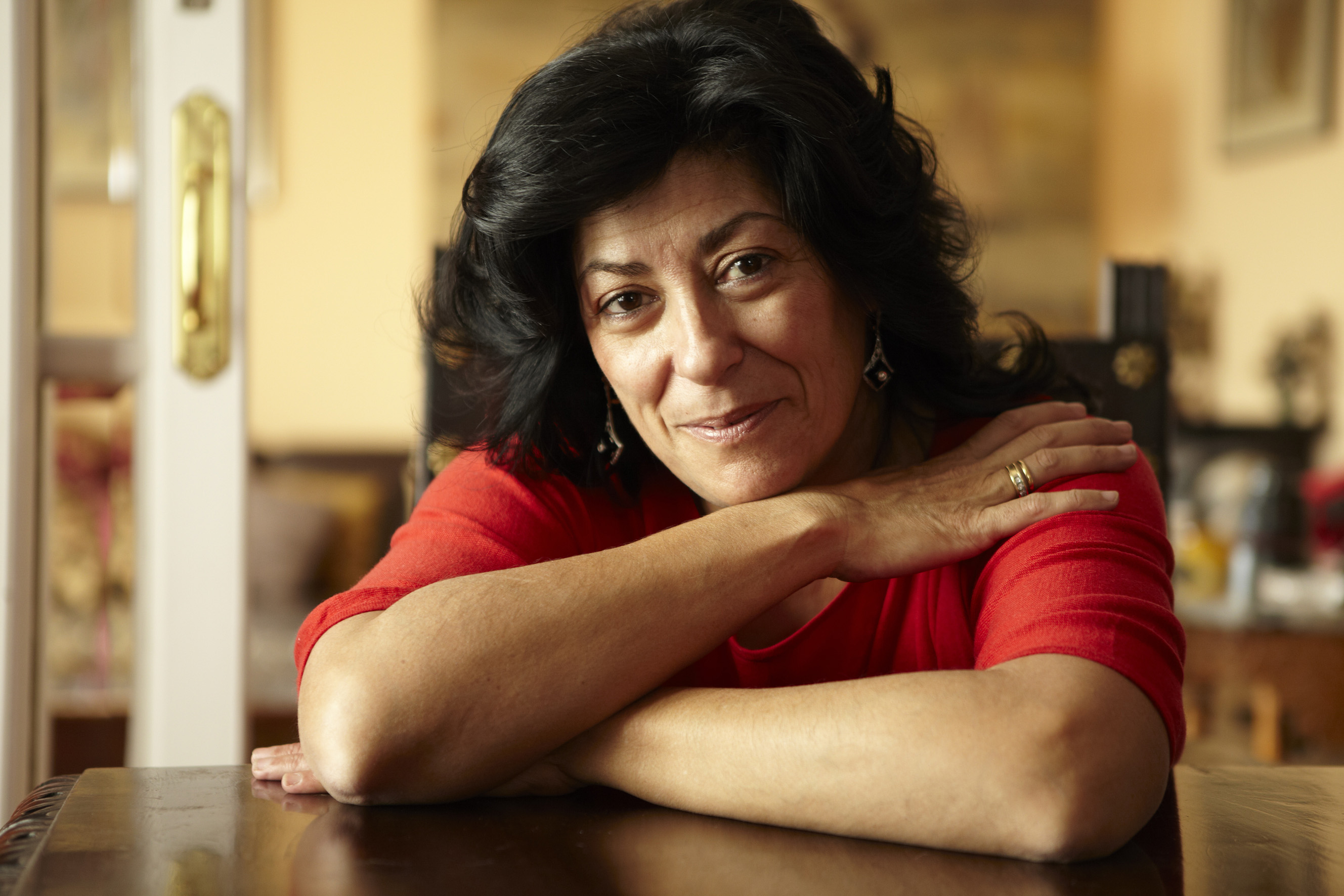
In 2010, there were only eight female archaeology professors in Iran’s universities. Aleksandra Lipczak talks to one of them, the Iranian archaeologist and academic Leila Papoli-Yazdi.
Let me start with a question you often ask your students: why do archaeologists need gender?
Since its inception, archaeology has been mostly a domain of wealthy men. They collected and imported ancient items from the East, such as coins and other precious, rare objects. When archaeology became a scientific discipline, it was still dominated by men for a long time. It was to do with the nature of fieldwork: men were supposedly better suited for it.
Although women started taking part in excavations in the first decades of the 20th century, masculinization persisted till the 1980s, when a revolution happened and the science of archaeology became open to feminist theory. That lead to a thorough change of the idea of an archaeologist.
In Iran as well?
Archaeology is an ‘imported commodity’ in Iran. It was brought to the Persian Empire in the 19th century by Naser al-Din Shah alongside other modern inventions, such as photo cameras and ballet. And then almost immediately it was taken over by the state, so it has always had strong connections with nationalism, and also with Aryanism – the search for proof of the greatness of the Aryans as ancestors of today’s Iranians, who consist of very different ethnic groups.
Even now in Iran, archaeology serves as a political tool. Former president Mahmoud Ahmadinejad posed for photographs against the Cyrus Cylinder from the 6th century BCE. Therefore, it’s not surprising that it is still a discipline dominated by government.
So you don’t have many female colleagues in Iran?
In 2010, when I lost my job at university, there were eight female archaeology professors in the whole country.
Iranian archaeology has two branches. First, there is the official one, under the aegis of the Ministry of Cultural Heritage and Tourism. There are some female archaeologists in that institution, but mainly in the administrative posts. Second, there’s the university branch. So if you’re a little bit lucky you can be a female archaeologist. But if you are, you have to ignore your gender, follow government orders, or play the role of a male to get to higher positions.
Meaning?
Archaeology in Iran serves primarily the interests of the state. It is used for strengthening the narrative of the eternal might of the nation. You can see it in the way the archaeology is practiced: at least 70% of excavations (according to 2017 statistics) are being conducted on prehistoric sites because this period of time is safe and in many cases politically neutral. If you’re interested in other, more recent questions or social issues, that raises suspicions. You risk being branded as an enemy of the state.
I just heard your lecture in Kraków during which you spoke about how the modernization of Iran led to the economic and social marginalization of women.
As an archaeologist, I deal with female agency in various epochs. I became interested in the traditional model of land inheritance by women in the countryside that not only allowed them to have property but also to work – many of those women toiled from dawn till dusk.
Under the direction of my husband, Omran Garazhian, who is also an archaeologist, we studied villages in the north-east of Iran, which were abandoned in the 20th century as a consequence of land reform. We conducted interviews with people who left those villages and with their descendants, asking them for the reasons and circumstances of their departures. We also looked closely at their graves trying to find out why they still bury their dead where they do. It’s easy to blame the current oppression of women in Iran on Islam and ayatollahs. But that’s just a part of the truth, for the oppression has much deeper roots in a combination of tradition, politics, economics and religion. It goes back all the way to modernization during the latter decades of the Qajar dynasty (1796–1925) and the first decades of Pahlavi dynasty (1925–1979), and the oil boom that left hundreds of thousands of Iranian women without independence and livelihood. They were forced to migrate to towns with their husbands, losing their land and work as well as tradition, for in the cities there was no employment for them.
So during the rule of the shahs the situation of women wasn’t different?
In the mid-1930s, Reza Shah introduced forced unveiling as well as European standards of dress code. The popular belief is that he was inspired by his visit to Atatürk’s Turkey, but Fatemah Sagedhi in her book Modernization, Gender and Nationalism proved otherwise: she writes that Shah’s decision was influenced by contracts with European clothing companies that would sell modern-style apparel to Iran, too. Because of the forced unveiling, many religious women simply stayed in their houses, losing access to education and employment. And very few scholars consider that Reza Shah was also locking up feminists and closing their journals.
There are many narratives on the 1979 revolution written from the perspective of the elites. But when you begin to look closely at the economic and social history of Iran, when you listen to the voices that aren’t usually heard, you discover many valid reasons to rebel against the Pahlavi regime.
You also do research on Polish refugees in Iran.
I am a member of a six-person team of archaeologists called GAPEND, alongside, among others, Arman Masoudi and Mariam Naeemi, who currently lives in Germany and who for years has been studying Polish cemeteries in Iran, as well as material artefacts left by Polish refugees. My colleagues collect documents and analyse traces, including linguistic ones. For example, in Iran we call a particular type of chair a ‘lahestan chair’. There are also cafes called ‘Lahestan’ – meaning ‘Poland’. Our team tries to find out the roots of it, the stories and narratives behind such names.
People assume that migration goes only in one direction: from the Middle East to Europe. However, sometimes quite the opposite was happening. Polish refugees during World War II is just one such example. Apart from the soldiers, there were also ordinary people coming to Iran; women and children. Their histories are what we are engaged with working on, especially the virtually forgotten histories of ordinary people.
Why is that a task for an archaeologist?
What I do is the archaeology of the recent past. We are talking here about a relatively new branch of archaeology, combining it with art, the social sciences, and history. Many scholars, such as Randall McGuire, define it as a form of political activism that aims at researching and bringing forward what has been invisible, ignored, ‘marginal’.
Most people do not leave behind any diaries or other written documents. So what do you do if you are a researcher and want to learn something about their lives? There is no written stuff to be read. But there are posessions, houses, graves and rubbish. You go and study those material remains. And there is much to be read from such traces: people’s interests, desires, habits, incomes.
Initially, this field was explored by archaeologists engaged with the lives of modern people. From the 1920s, some American archaeologists started to focus on modern material culture, but officially the branch of archaeology we are talking about was born in the 1970s when William Rathje invented garbology – the archaeology of modern waste. He wanted to know how do so-called ‘ordinary people’ live; what do they eat, how much do they consume.
What did you want to learn in Bam?
Bam is a town in south-east Iran that was virtually razed to the ground due to the earthquake in 2003. The earthquake happened early in the morning of 26th December 2003 when everybody was fast asleep. Almost 40,000 citizens were killed, mostly because of the poor quality of houses built with clay and mudbrick. Many of those who survived moved out, leaving behind only ruins. Together with Omran Garazhian and the rest of the team, we were wondering what we can do in the face of such tragedy; what part we can play as archaeologists. 35 days after the earthquake, we began our ethno-archaeological project, which continued until 2008.
In 2008, Maryam Dezhamkhooy and I conducted an excavation in six houses trying to reconstruct the lives of their inhabitants. We especially wanted to know what those people were hiding behind the facades.
What did you discover?
It turned out everybody was living sort of double lives. They were forced to adopt certain social roles and adhere to strict rules. But in their homes, they would adopt different attitudes and values.
Namely?
In one of the houses we found the letters and diaries of a transgender person. The author was Saman, who, before the gender reassignment surgery, had been a girl named Setareh.
The letters he exchanged with his girlfriend were written over the course of eight years. Both of them were also writing the diary together. Their female friend was hiding all those documents, as well as their photos, in her home. The relationship had to remain secret, hidden even from their families. We know from the letters that Saman was treated with hostility in his environment. Even Roya, his fiancée, didn’t seem to be treating him as he was expecting. And in their letters, she was constantly asking him questions about his identity. For his part, he was trying to prove that he was a ‘proper man’. One example: he would write to her that he wouldn’t let her go to university because of other male students.
Saman is the only person we write about who survived the earthquake. We have used a pseudonym in order to protect his privacy. We also sent him back the letters we found and asked for permission to tell his story. He didn’t want to see most of his stuff, because the memories they brought back were too painful, but he didn’t have any problem with us writing about him.
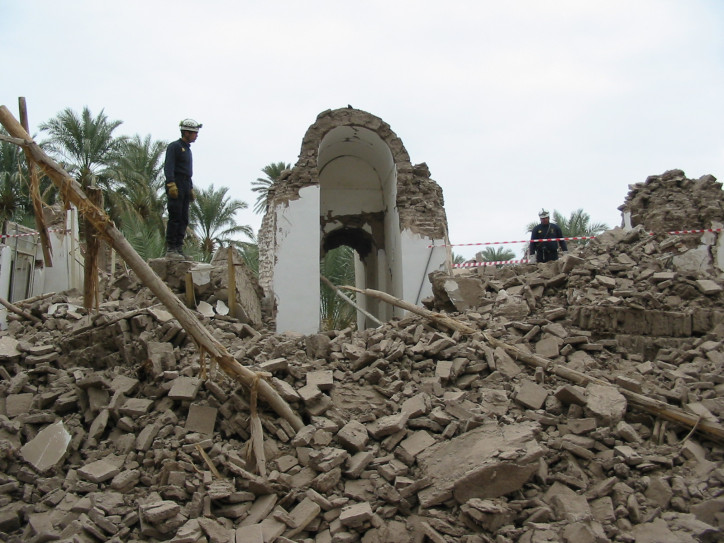
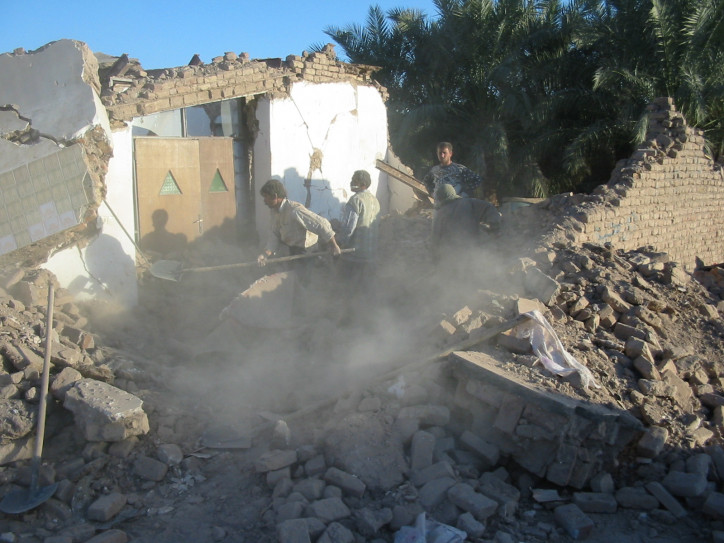
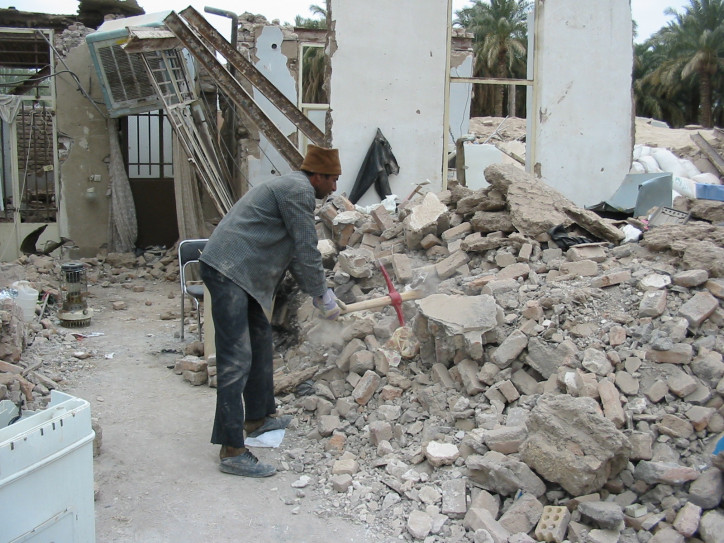
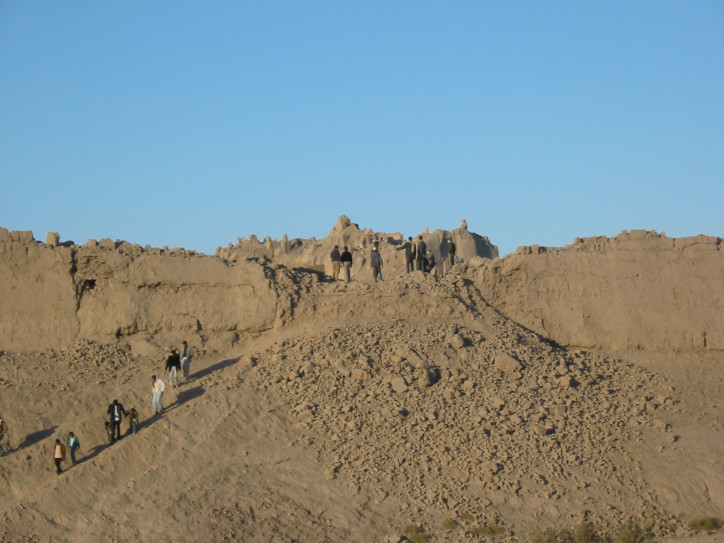
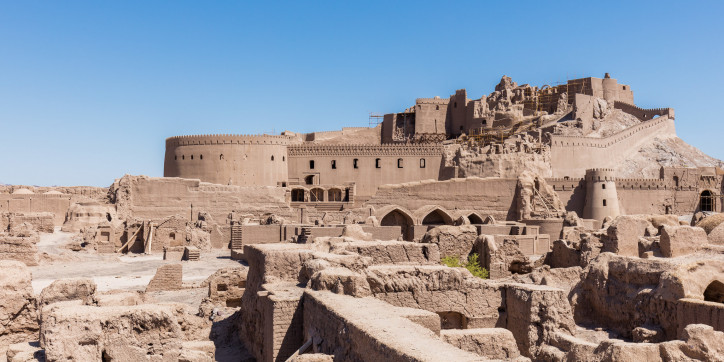
Searching the ruins helped uncover a story that would otherwise be unavailable?
No other method would have given us access to such a detailed and honest narrative. It was the only way to gain an approach to the relationships of a transgender person, to learn how such a person functions in society. An ordinary interview wouldn’t have provided us with such knowledge, due to taboos in Iran. Autocracies, such as Iran, share a common trait: the state claims to speak for its citizens, for us all. In 2007, during a visit to Columbia University, the then president Mahmoud Ahmadinejad said that there is no homosexuality in Iran. The law spoke, forcing all Iranian homosexual men and women into nothingness.
Bam was a small town, so everybody there knew about Saman. But officially his identity did not exist. This example shows why the archaeology of the present is so controversial as far as the regime is concerned. It rearranges stress points of power. By inviting those whose stories are being wiped out back into a historical narrative, it prevents negating anyone’s existence.
There are many archaeologists who excavate sites and crime scenes of the recent past: it is being done in Bosnia and Herzegovina, in Cambodia, in Argentina, here in Poland. However, all this work is conducted after the fall of a regime. The Iranian case was quite unique because we were working – and still are – under the dictatorship.
Was it then that you lost your job at the university?
Not right away. My husband and I were working at Bu-Ali Sina University, a renowned institution in Hamedan, the third or fourth best higher learning facility outside of Tehran. In 2009, we were forced to move to a college in the small town of Neyshabur in the east, a region known to us as my husband’s hometown – it was hard to work in such a small town very far from the cultural institutions, bookshops, and ongoing discussions and workshops. But at least I still had my job and my classes.
We conducted excavations there in an estate of the famous painter Kamal-ol-Molk, who lived at the turn of the 19th and 20th centuries. It was thought to be a site of busy social life, of fun, but we found artefacts such as kilns and bullets, suggesting that it was also a site of resistance against the rule of the authoritarian Qajar and Pahlavi dynasties. It turned out that there, too, a different truth was hiding behind a façade.
And that was the straw that broke the camel’s back. After this project, I lost my job and was forbidden to teach.
Why?
Nobody gave me any specific reason. It was in 2009 and 2010, the time of the Iranian Green Movement, when you had to make a choice: I’m either on the side of the people or against them.
Did you take part in the Iranian Green Movement?
I supported it, along with many Iranian people: intellectuals, students, workers. It was a wave, and I was a part of it.
And I still am. The Iranian Green Movement and many other alternative movements, such as the workers’ movement, women’s movement and students’ movement are alive. Networks that were established still exist. Thanks to sympathizers of the Iranian Green Movement, I was able to publish books despite being blacklisted. In 2009, I did what I thought was right and I lost my job. But it wasn’t just about the protests. My feminist views certainly had a lot to do with it. Maybe they were the main factor.
How did those views came about?
I come from an upper-middle-class family. My father was a geography professor at a university. But finally I decided to turn back to my social status background.
When I was very young I used to think a lot about what and whom I should focus on as an archaeologist. There were more than enough archaeologists dealing with kings, with ministers and courtiers. What interested me was using archaeology to give back a voice to those who had been deprived of it – for example, to women.
Since there are so few female archaeologists, it must have been difficult for you at the university?
As someone from an ordinary, non-marginalized family, it was not so difficult to be hired as a female professor, but exceptional to be a female archaeologist at the time. I got a fellowship from the Iranian Ministry of Science, and as a result, could get the job. But equally, it would have been much more difficult for a young scholar from a non-Persian/Turkish ethnic background to be hired as a professor.
Yet my acceptance at the university was conditional. I was constantly being told that I should behave as befits a woman of my social class. Even my father was told that he hadn’t raised his daughter properly. Fortunately, he doesn’t agree with that at all. Anyway, he’s always been warning me that archaeology is a bad idea. He sensed I might have troubles.
Today only 16% of university professors in Iran are women; out of that, only 4% have tenure. The rest are assistant lecturers, conducting only colloquia.
Only 12.8% of Iranian women are employed. In 2020! It is one of the lowest female employment rates in the whole world. Of course, there is also an informal economy: family businesses, the black market, or sex work. The situation is a little bit better in the countryside, however, generally we are talking about very low numbers.
On the other hand, there are a lot of female students – they constitute 70% of the whole student population in some fields like the humanities and art. This number went up rapidly in the last decade. I think it is a form of resistance. So we have a paradox here: women can study, but later 64% of them can’t get any jobs.
As far as the situation of women is concerned, Iran is one of the most brutal regimes in the world (in the Global Gender Gap Index, it is positioned 148 out of 153 countries). Work, or lack thereof, remains the main subject of conversation and worry in today’s Iran. Women consider the economic issue more important than, for example, the issue of hijab, on which people in the West are so fixated.
In one of your scientific papers, you describe the moment when you learned about your dismissal from the university. Which happened at the same time that a prison was discovered in the basement of your department.
Yes, in mid-2009, during some visits, we discovered an old prison right under our feet, in the building where we were teaching art, archaeology and architecture at Bu-Ali Sina University in Hamedan. Some documents were also discovered. It turned out that the basement of the department was used in the 1970s by the secret police force SAVAK. Students and lecturers were incarcerated there, interrogated and tortured. We also found the case documents of Professor Hesami, who was a victim of repressions in the 1970s. His own supervisor informed on him. By coincidence, just when those discoveries were made, another oppositional movement – the Iranian Green Movement – came into being, and the government initiated another wave of brutal repressions.
How long were you teaching in that building before you discovered the prison there?
Seven years. I knew that place really well. At first, I couldn’t believe it. A story four decades old that happened in exactly the same place where now I am facing a similar situation? However, we managed to trace several students of Professor Hesami, and they all confirmed that those things had happened. We suspect he himself was murdered, for there is no information on his later life; we didn’t even find his grave.
Similar mechanisms are still at work. Each generation of Iranians has to rebel against the rulers. The 1979 revolution brought the change of regime, but the patterns of violence remain the same. I myself was never arrested. I suppose that the Iranian security services never quite managed to put all the information about me into a coherent story. Considering my childhood background, my oppressors probably thought initially that they would simply break me if I was left without any income.
And wasn’t that enough?
I struggled, not only because of a lack of money, but also because of the teaching ban. Teaching is my vocation. I was suffocating. There was no chance of finding a job. Fortunately, in 2012 I got an invitation from Professor Susan Pollock of the Freie Universität Berlin, and it was a godsend to me. I was teaching there for a few years, but in 2015 I decided to go back to Iran.
I thought that with the 2013 election of Hassan Rouhani, who had been thought of as a progressive, I would be able to get back my job. But it turned out I was completely mistaken. After my return, I was interrogated dozens if not hundreds of times. It was very confusing, for I wasn’t able to find out what I was being accused of. The questions were absurd, there was no logic to them.
Once a local paper interviewed me on the benefits of reading. At the time, my husband and I were living in Neyshabur, where many people, chiefly women, are still not very well educated. So the interview was about promoting literacy – there was nothing political about it. But when it came out, it was a nightmare. More repressions, more interrogations. The security services were harassing my brothers-in-law with phone calls and spreading rumours about me. It seemed that they desperately wanted me to lock myself up at home, to become a docile housewife who doesn’t speak out publicly about anything.
All those things lasted for a couple of years. During that period, I sent 52 proposals to various institutions. I wrote it all down and counted. There were book proposals, proposals on research, on excavations, on courses. All of them were rejected or simply ignored. I listed them all in a separate file. One day, I think, it will be a valuable document of that period.
Were you blacklisted?
I don’t know. There was never any formal accusation, I was never brought into court. Everything was based on conjectures. I couldn’t work at all. In many cases, when conducting workshops for young people, I was using my husband’s name. I started writing novels. An archaeologist should have something she works on. So I decided to become my own field of study. That was my survival strategy.
What else did you do?
I was organizing seminars, lectures and conferences in my own home. My female colleagues and I were gathering in order to watch online lectures about gender. We were talking, exchanging books, making promises to each other that we wouldn’t give up. In this way, we could free ourselves, if briefly, from the omnipresent oppression. We could taste some normalcy.
I also decided to apply for Scholars at Risk [an international network of academic institutions that supports persecuted scientists – ed. note]. I got a stipend in Gothenburg.
What are you working on there?
I am using my time to study a new methodology. For a few years in Iran, I didn’t have access to new publications or resources, so my working methods got a little bit obsolete. I fell out of the loop, and in today’s world an archaeologist must be up to date with scientific tools. Fortunately, Gothenburg has one of the best archaeology and history departments in Europe.
The current situation in Iran and the tensions with the US must be very worrying to you.
I have two identities: I am a citizen and an archaeologist.
As a citizen, I cannot sleep at night. I’ve got no idea where all this leads to, and I have bad feelings about the people ruling Iran and the US; about how far can they go. But as an archaeologist, I simply think that this is all a dark tunnel that we simply must dig through. And there is a light at the end of it. In Iran, there are more and more intellectuals – as well as people from the working classes – who shout, who resist, who actively seek their own voice.
Many young Iranians are studying abroad. That can also contribute to changes. It’s like with a pregnancy: in the end, something will come out.
The regime won’t give up without a fight. Until now it has been using harsh methods in dealing with protests.
In the last few decades, there were many resistance movements in Iran. Rebellions spark up quite regularly, they disappear, then they return. When I was working at the university, the students rebelled. Then, in the mid-2000s, there was an incredible, inspiring campaign: One Million Signatures, a mass women’s rights movement. Some of the female leaders are still imprisoned, for example Nasrin Sotoudeh and Narges Mohammadi.
All those movements face the same problem. There is always a group of so-called reformists, destroying a movement from within. The reformists beguile people with empty promises, for all they really promise is just a pretend change.
So yes, if you look at all of this from the perspective of the last few decades, true changes indeed seem unattainable. But as an archaeologist I am privileged in that I’m able to see things in the long term, going back a couple of centuries. There were many much more difficult, much darker periods in Iran’s history. For example, let’s take an episode that was wiped out from the collective memory of Iranians: the famine of 1916. Millions of people died because of malnutrition. But the society managed to pick itself up. I don’t deny the value of lost lives – all I’m saying is that we went through much more dramatic times than the present.
Does being an archaeologist help you find some balance?
Archaeology deals with long-term processes. When you look at things from a long-term perspective, you realize that sooner or later all tyrannies fall down.
Once at the university I was talking to a professor who had denounced me many times to the security forces. I asked him to name me the Nazi colleagues of Hannah Arendt or Karl Jaspers. It’s difficult, isn’t it? He wasn’t able to name anyone. The fascist professors are forgotten, lost in the mist of time. As they should be.
Parts of this interview have been edited and condensed for clarity and brevity.
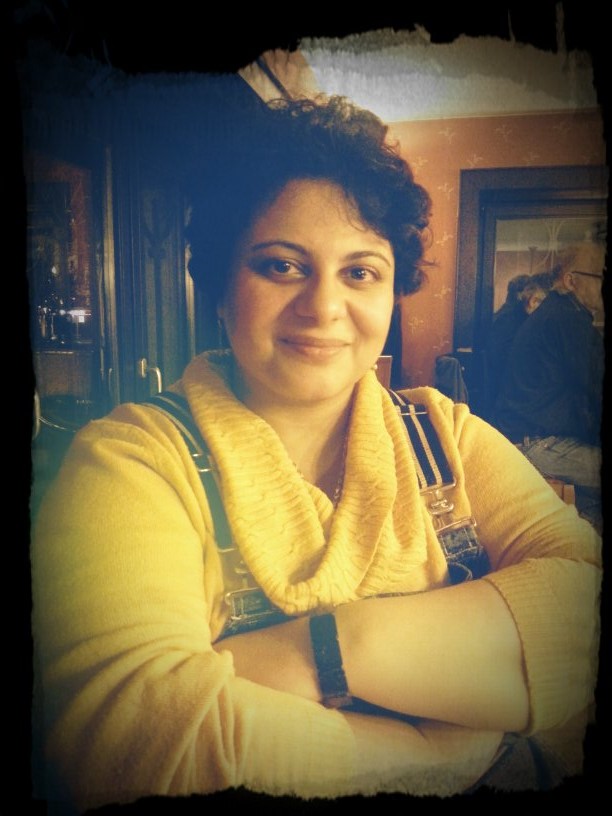
Leia Papoli Yazdi:
An Iranian archaeologist, author of a dozen or so books and papers. Among her interests are the archaeology of the recent past, post-colonial studies and gender studies. She has conducted excavations in Iran, Kuwait and Pakistan, and taught at the department of Gender Studies and Near Eastern Archaeology at the Freie Universität Berlin. Since 2019, she holds a Scholars at Risk scholarship at the University of Gothenburg.
Scholars at Risk:
An international network of academic institutions providing support to persecuted members of the academic community. Currently, there is an attempt to create a scholarship at the Jagiellonian University in Kraków.
For the last two years, the Jagiellonian University has been organizing lectures and inviting stipend holders from other countries. Among them was Leila Papoli Yazdi, who visited Kraków in January 2020.
More info: http://academicfreedom.online/


